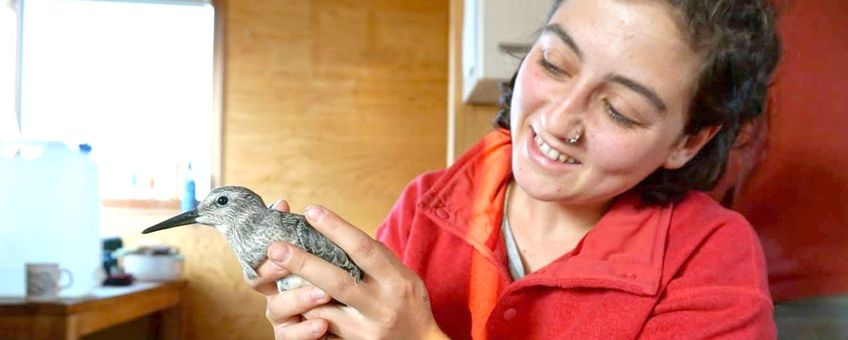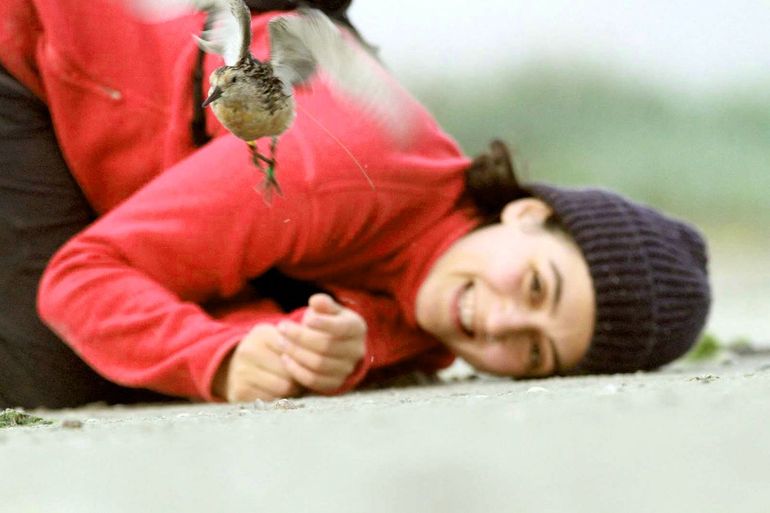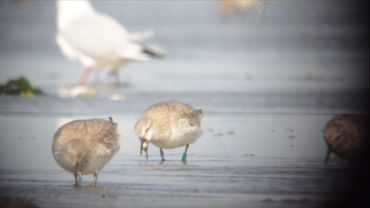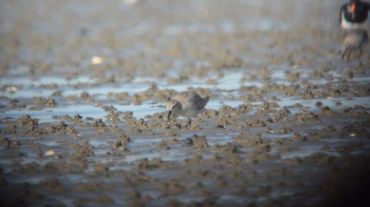
Adventurous bird personalities can help population cope with climate change
NIOZ Royal Netherlands Institute for Sea Research"Differences in character between red knots seem to be an important ingredient for the resilience of the whole group," said Selin Ersoy. "This could make the total population of red knots a lot more resilient while their environment is changing. Red knots could copy the food-gathering behaviour of adventurous peers who succeed in new places." Ersoy has, for the first time, shown that behaviour that was observed in experimental settings corresponds with actual real-life behavioural strategies in the wild, on the mudflats of the Wadden Sea. This week Selin Ersoy defended her PhD thesis at the Groningen University.

Animals also have personalities
Red knots of all ages and sexes show behavioural traits. These remain mostly unchanged over time but differ across individuals. Some individuals are more adventurous and show more exploratory behaviours a in new environment than others. Other individuals take less risks and hardly dare to move around in a new environment. These ‘personalities’ have ecological and evolutionary consequences, but to what extent is largely unknown, because few studies have investigated this in the field.
During her PhD research Selin Ersoy has developed a new way of identifying the variation in personality between individual red knots. She wanted to know if the behaviour in experimental settings could be extrapolated to a larger and more complex natural setting, and how individual differences develop.
“With our new method, that allowed studying animal personality in the wild, we found that red knots develop their personality probably through the experience that they get when growing up ”, says Ersoy. “After growing up, adults stick with exploratory behaviours. They seem to be like character types in humans.”
Explorers eat higher quality food
It was even possible for Ersoy and her colleagues to predict a suit of other behaviours in the wild. For instance, variation in explorative personality type (i.e., slow versus fast explorer) predicts foraging tactics and dietary choice in the wild. Fast explorers use more visual foraging and eat soft prey such as shrimp or worms, while slow explorers use tactile foraging and feed on hard-shelled prey such as cockles. This is a new explanation for variation in foraging niche specialisation between individuals in the same population.


Exploratory behaviour also relates to variation in movement across the landscape and over time. Ersoy: “We were amazed to see that slow and fast explorers have clearly different movement patterns during the night, while at day they moved more or less the same way. These different individuals even have different arrival times from migration. Fast explorers arrive to the Wadden Sea later than the slower explorers.” Ersoy and her colleagues want to study next where they stay in the meantime. Maybe these red knots take more time to care for their youngs in the Arctic.
The whole group benefits
“We found striking differences in feeding and movement patterns between slow and fast exploring red knots. This suggests that fast explorers might provide foraging information and new foraging opportunities for entire populations”, says Ersoy. “Such new opportunities are important because red knots face pressures from human impact on their coastal wintering habitats, directly related to availability of food. Fast explorers can help the entire population to cope with environmental change.”
Gap closed between controlled experiments and real Wadden Sea
The goal of determining behaviour in experimental setups is to understand the mechanisms behind the behaviour in the wild. Selin Ersoy’s study fills a critical gap between experimental research on wild animals in controlled environments and observed behaviour in the wild.
“It’s a first step. We need to do similar personality research on other animals and on other natural habitats”, says Ersoy. “We want to know if personalities work the same in other species and situations.”
Tracking movements of guillemots with tiny transmitters
Researchers like Selin Ersoy track birds using ultra-small radio transmitters placed on their backs during the summer months. Birds are not bothered by them. Those transmitters send out unique signals. These are received by antennas scattered throughout the Wadden Sea.
Reverse GPS
WATLAS is a new system that makes use of so-called 'reverse-GPS'. The tiny transmitters that are temporarily attached to birds transmit a signal of their own. That signal is received by fixed receiving stations in and around the Wadden Sea. Due to the tiny differences in the time of arrival of the signal between different receivers, the position of the animal-with-transmitter is calculated to the accuracy of a few meters, from second to second.

Thanks to WATLAS, researchers can watch a migratory bird such as the red knot move back and forth with low and high tide very precisely in search of food. Because many birds can be fitted with the relatively inexpensive transmitters at the same time, researchers can now see interactions between different animals happening from the comfort of their office chairs.
Text: NIOZ
Photos: Selin Ersoy; WATLAS; NIOZ
